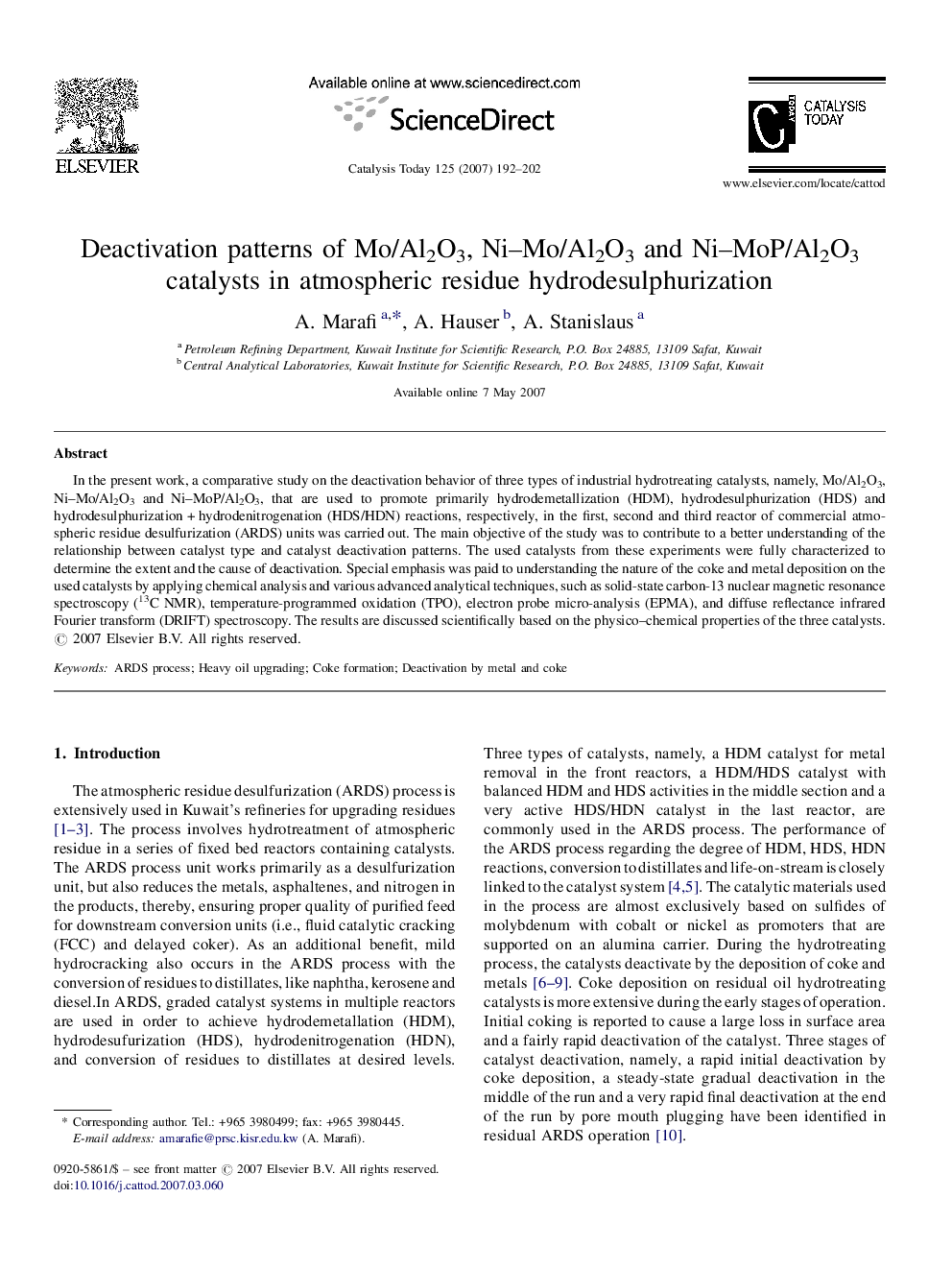| کد مقاله | کد نشریه | سال انتشار | مقاله انگلیسی | نسخه تمام متن |
|---|---|---|---|---|
| 57918 | 47135 | 2007 | 11 صفحه PDF | دانلود رایگان |

In the present work, a comparative study on the deactivation behavior of three types of industrial hydrotreating catalysts, namely, Mo/Al2O3, Ni–Mo/Al2O3 and Ni–MoP/Al2O3, that are used to promote primarily hydrodemetallization (HDM), hydrodesulphurization (HDS) and hydrodesulphurization + hydrodenitrogenation (HDS/HDN) reactions, respectively, in the first, second and third reactor of commercial atmospheric residue desulfurization (ARDS) units was carried out. The main objective of the study was to contribute to a better understanding of the relationship between catalyst type and catalyst deactivation patterns. The used catalysts from these experiments were fully characterized to determine the extent and the cause of deactivation. Special emphasis was paid to understanding the nature of the coke and metal deposition on the used catalysts by applying chemical analysis and various advanced analytical techniques, such as solid-state carbon-13 nuclear magnetic resonance spectroscopy (13C NMR), temperature-programmed oxidation (TPO), electron probe micro-analysis (EPMA), and diffuse reflectance infrared Fourier transform (DRIFT) spectroscopy. The results are discussed scientifically based on the physico–chemical properties of the three catalysts.
Journal: Catalysis Today - Volume 125, Issues 3–4, 30 July 2007, Pages 192–202